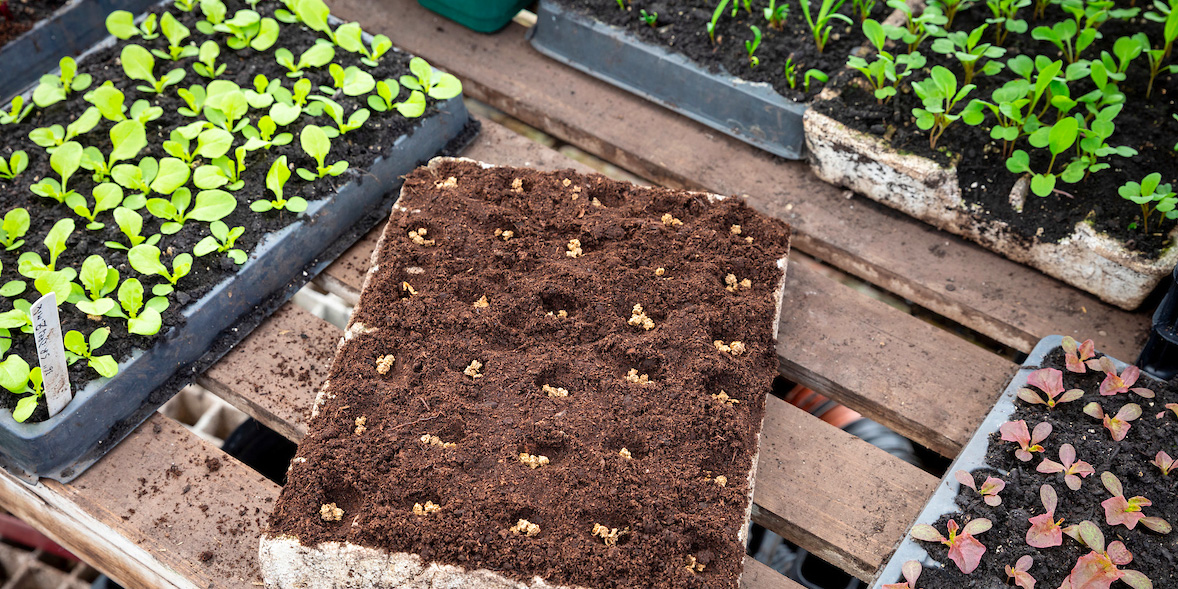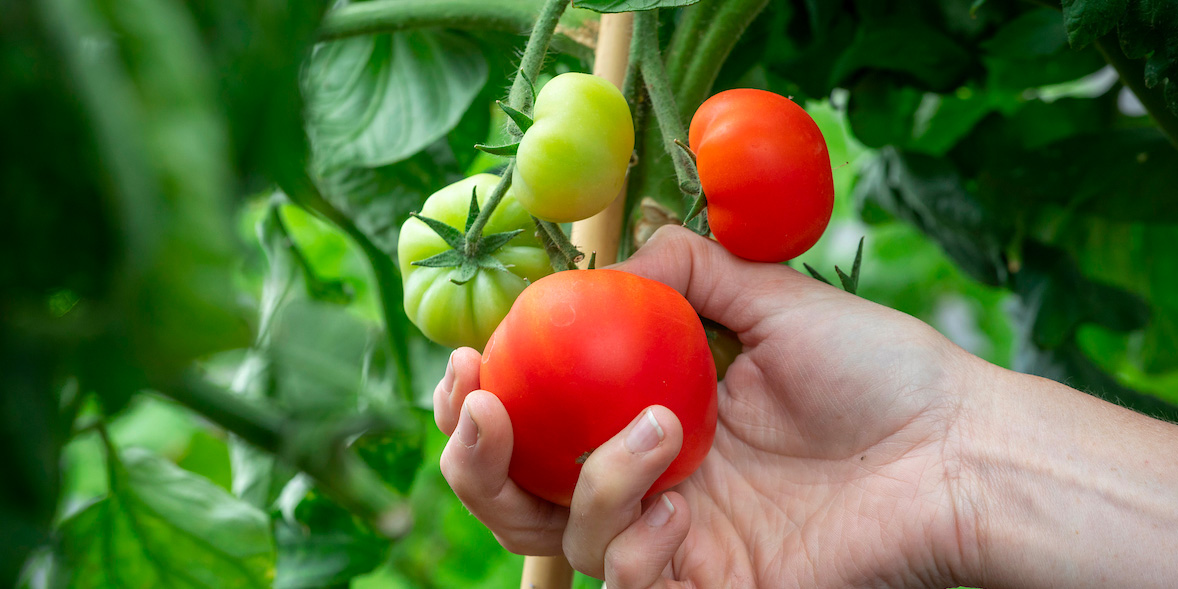In many areas of the UK, it was the wettest February for many years so the ground is pretty soggy. Don't be in a rush to give your lawn its first cut of the season or other gardening jobs until the soil has drained. On clay soils, it's best to lay a board to stand on to avoid compacting them when the ground is wet. The good news is that the clocks go forward on 31 March so we'll be getting extra time in the garden!
Breathe new life into your outside spaces. Sign up for our Gardening newsletter, it's free monthly
Gardening maintenance for March
Weeding
- Weeds will be growing as strongly as your plants, so keep on top of them before they can get a hold.
- Digging them up with a hand fork is the best idea, as you can get all the roots out.
- Reserve hoeing for dry weather, as weeds can re-root if the soil is moist.
Finish cutting back borders
- New growth is appearing but there’s still time to cut back any remaining perennials and deciduous ornamental grasses.
- If you have a garden shredder, feed the old stems through it before putting on the compost heap as they’ll rot down faster and your compost will be less ‘twiggy’.
Discover our best garden shredders.
![]() Mulch borders
Mulch borders
- The most effective way of improving the soil in established borders is to mulch the surface with a 3cm-layer of organic matter, such as garden compost. It will also help to suppress weeds and trap moisture in the soil.
- If your heap doesn’t produce enough compost to mulch the whole garden, it’s worth contacting your local council to see if it’s possible to buy the compost that’s made from the green-waste collections. Mushroom compost (though not for acid-loving plants, as it contains chalk) and composted bark make good alternatives and can be bought online.
Control slugs and snails
- Now that spring has arrived, the temperature should be starting to creep upwards. But the lush new growth that this encourages is irresistible to slugs and snails, so be sure to take some controls now.
- We found that organic slug pellets based on ferric phosphate are just as effective as ones based on methaldehyde. We've also had success with biological controls, though these don’t control snails.
- Biological controls use microscopic nematodes which are natural predators of slugs. You can either buy empty packets with a voucher inside at the garden centre or buy them from specialist companies via mail order. They need a minimum soil temperature of 5C so the company will only send them out when conditions are suitable.
Read more about slugs and snails in your garden.
Clean the mower
- Before you make the first cut of the year, check the underside of your lawn mower and grass trimmer and scrape off any old clippings that are stuck to them.
- It will make the mower lighter to push and more efficient at its job. If there’s one job to resolve to do more often this coming year, regularly cleaning the bottom of the mower is it.
Replace your old machine with a Best Buy lawn mower.
Grow-your-own jobs for March
Plant hardy veg
- Whether you’ve grown them yourself or bought in plants, put hardy veg, such as peas, beetroot and lettuce, in the ground as soon as it’s large enough.
- Cover the plants with heavy-duty fleece afterwards to trap the sun’s warmth and protect them from wind and pests, such as rabbits.
Sow veg
Broad beans, spinach, lettuce, peas for pods and shoots, onions, spring onions, early brassicas, such as cabbage, calabrese, kohl rabi and cauliflower, turnip, radish, parsley, coriander, dill and beetroot can all be sown in module trays indoors and planted outside when they’re big enough to handle.
Alternatively, sow them direct in the ground and thin out the seedlings to the distances given on the seed packets.
Plant early potatoes
- While most varieties of potato are planted in April, earlies, such as ‘Rocket’, should be put in during late March.
- Plant them about 40cm apart in rows 45cm apart in the ground.
- Alternatively, if you’re planning to grow them in pots, use one that’s at least 25cm in diameter and half fill it with one of our best composts for containers. Bury the potato just below the compost surface. As shoots grow, cover with more compost until the pot is full. Cover the young plants with garden fleece if frosts are forecast. Make sure you water the pot regularly so the compost is moist but not wet.
- By late June or early July, your potatoes should be OK to harvest. Check they're ready by putting your hand into the pot and gently feeling for the tubers. If they feel big enough, tip out the contents of the pot, otherwise leave them to continue growing.
Read our guide to how to grow potatoes.
Sow tomatoes for growing indoors
- Wait until mid-month and then sow tomatoes you’re planning to grow indoors, pricking out the seedlings into individual pots later on.
- Plants for growing outdoors are best sown in April or they’ll be ready before it’s warm enough to plant them outdoors.
Discover our best composts for sowing seeds.
Plant onion sets
- Onion sets (small bulbs) may be a more expensive way of growing onions compared to raising plants from seed, but they’re quick and easy to start off.
- Space rows 30cm apart for easier weeding and space plants 5cm apart.
Learn more about how to grow onions.
Feed rhubarb
- Give rhubarb a boost with a high-nitrogen feed, such as sulphate of ammonia or chicken-manure pellets.
- Gently fork it into the surface of the soil around the plant and water if the weather is dry.
- The first sticks of rhubarb should be ready to pull from April.
Plants-and-flowers jobs for March
Pot up plug plants
- As soon as plug plants arrive in the post, take them out of their packaging and pot them up in a Best Buy compost for raising young plants.
- Give them a thorough watering and put them in a light, frost-free place, such as a greenhouse or windowsill.
Discover the best places to buy plug plants online
Deadhead spring bulbs
- Depending on the weather, spring bulbs, such as daffodils, may be starting to fade in late March or just opening.
- Take off the faded flowers and put them on the compost heap.
- Feed the bulbs with tomato feed to encourage beautiful displays next year.
Learn how to make compost.
Divide snowdrops
- Lift clumps of snowdrops, split into groups of two or three bulbs and replant them.
Watch out for lily beetle
- March may seem a bit too early to be watching out for lily beetles, but they often attack crown imperials (Fritillaria imperialis) at this time of year. Later on, they'll attack lily flowers and foliage.
- Squash any of the red adult beetles and the black larvae that you find or they’ll quickly shred the leaves and flowers.
Refresh long-term pots
- Pots with long-term plants, such as perennials or shrubs, can be given a boost by scraping off the top few centimetres of compost.
- Refill with fresh Best Buy compost for containers mixed with a Best Buy controlled-release feed.
- Remember to water during dry spells.
Pot up dahlia tubers
- Bring them into growth in a light, frost-free place and they’ll get off to a great start, ready for planting outdoors after the danger of frost has passed in late spring.
- You can also use some of the shoots to make cuttings later on.
Try our Best Buy dahlia varieties
Plant summer-flowering bulbs
- Look ahead to colourful borders this summer by planting bulbs, such as gladioli, galtonia and eucomis.
Sow half-hardy annuals
- Get set for lots of colour in your border and pots this summer by sowing half-hardy annuals indoors. Good plants to try include zinnias, antirrhinums, cosmos, nicotiana and marigolds.
- Sow larger seeds in modular trays and sow smaller ones in pots or seed trays for pricking out as seedlings into individual pots.
Discover the best places to buy seeds online
Look ahead to what to do in April in your garden













